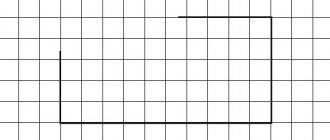Every parent wants their child to “speak” quickly, so that his speech is correct and beautiful. Next to a “talking” child, life seems more fun, more varied, and it is pleasant to tell friends about the first words and phrases uttered by the baby. In addition, developed speech is an indicator of the correct development of the child.
How to help your baby's speech development? We offer several simple techniques, some of which you probably already use, consciously or intuitively. We hope that you will be able to gain some new ideas for yourself.
Sing songs to your baby throughout the day (children and adults)
From the very first months of life, it is extremely important to sing songs to your baby. Singing combines words, their meaning and rhythm - and this is exactly what we need for the harmonious development of speech. And a song sung by a mother or another loved one is often sung not far from the child, and he sees the face of the singer, his lips, facial expressions, and emotions. All this contributes to the full perception of melody, rhythm and words.
It is very important for an adult to sing, and not to play recordings of songs, even when it seems that there is no hearing or voice. You don’t even have to sing, just recite the words of the verse in a chant manner, slowly. The main thing here is that the rhythm matches and that the baby likes it. You can read more about the importance of mother’s singing for development, recommendations on how and what to sing and listen to examples of simple songs for kids on the Galka-Igralka website
Child speech development: stages, exercises for improvement
20.02.2020
Your child is still a perfect baby. What kind of speech development can we talk about? All you can hear from him is a dissatisfied “wow” or a joyful “ahu”, well, and some obscure sounds . Unfortunately, many mothers and fathers believe that it is not worth even trying to talk to children until their first intelligible word. This is a huge misconception. You need to talk to your child from the very beginning of his life, or better yet, when he (or she) is still in his tummy.
Those same incomprehensible sounds mean that the baby is already developing speech . The baby wants and tries to communicate. There are several stages of speech .
The first is a cry
After birth, the baby finds himself in an unfamiliar environment. When he was under heart , his needs were fulfilled instantly. Now he has the only way to express emotions when it is painful, wet, cold. Or he wants to eat, sleep, the warmth of his mother’s hands. Of course it's a cry. Moreover, starting from the third month, the intonation of the cry changes. And mom can distinguish between different cries - pain, dissatisfaction, whims.
The second is revelry
It’s interesting that the buzz in different countries is the same - aaaaaaaaaaaaaaaaaaaaaaaaaaaaaaaaaaaaaaaaaaaaaaaaaaaaaaaaaaaaaaaaaaaaaaaaaaaaaaaaaaaaaaaaaaaaaaaaaaaable to see how it works. It lasts from about two months to six months. When the baby is alone, there is only one hum - he seems to be trying out sounds . When mom or dad are nearby, the noise is of a completely different quality. You can notice that the child looks into the eyes and looks at the lips. That is, he wants to start a conversation. And he definitely needs to be supported.
The third is babble
At six to seven months, babbling replaces babbling. The first individual syllables are used - ma, pa, ba, yes. Gradually they connect and turn into a verbal chain. During this period, be sure to read poetry to your children, and sit him opposite so that he can see your lips. Talk to him. And don’t get carried away by fashionable methods of speech . The child needs communication, and not just ingestion of didactic material. Otherwise, there may subsequently be problems emotionally and communicating with others.
Fourth is the first word
Finally, the moment everyone has been waiting for has arrived. The baby formed his first word. This happens for about a year, give or take a month. The words begin to fill with meaning. At this moment, the child needs help from his family. Call a spade a spade and pronounce your actions.
It is very important to talk to your child during games. For example, everyone knows the children's rhyme “Teddy Bear.” The game will look something like this (baby-M). The adult reads the poem and waits for M to repeat the actions. The bear is walking - M is marching. Collecting cones - M bends down, collecting imaginary cones. A lump hits his forehead - M easily hits himself on the forehead. The bear stumbled - M sits on the floor or stomps his foot.
And you can play like this with any poem. And, most importantly, dear mothers, remember that when a baby screams, this is normal. Within reason, of course, and up to a certain age. The quiet child is sick or is up to some mischief.
Published in Defectology Premium Clinic
Talk to your child like an adult
Long before the active speech period, the child develops a general idea of speech and his native language. After all, he hears our speech every day - how we talk to each other, ask or answer questions, hum a song under our breath or talk on the phone...
It is very important to talk a lot with the child and in front of the child, and often turn directly to the baby himself (even if it seems that he still does not understand anything). Let your speech be quite simple and accessible, but at the same time correct, “adult”. You should not try to simplify words and replace them with onomatopoeia (for example, “yoke-go” instead of “horse”), because then you will have to retrain your child back to “full-fledged” words.
Features of speech formation
One of the most important conditions for the development of a child’s personality is the complete and timely acquisition of speech skills. As a rule, these skills begin to develop in childhood and preschool age. Ideally, at the end of the first year of life, the baby should be able to pronounce simple words, and by the age of 3-4 years, his vocabulary should consist of approximately 1000 words.
In theory, at the age of 4 years, a child can already retell a simple fairy tale, describe his actions, and analyze the actions of his parents. However, a different situation is increasingly encountered in practice. That is why pediatricians, child psychologists and speech therapists try to blur clear boundaries, since each child is unique and the process of speech development can proceed in its own way.
For the early development of a child’s speech, it is necessary to create ideal conditions in which the baby:
• physically develops in accordance with age;
• does not suffer from neurological diseases;
• actively communicates with others;
• willingly repeats words spoken by relatives and friends;
• speaks out his desires;
• listens to adult speech;
• tries to pronounce words correctly.
In reality, creating such conditions can be problematic. The reason for this may be mental retardation, previous illnesses, neurological pathologies, or an unfavorable social environment.
In some cases, we can talk about delayed speech development if the child:
• repeats heard words or phrases without much desire;
• does not respond or deliberately clenches his teeth when asked to repeat a spoken word or phrase;
• independently solves everyday problems, deliberately without turning to adults for help;
• pronounces non-existent words;
• does not pay attention to the fact that his speech is incomprehensible to others;
• speaks worse than his peers.
It is believed that girls pronounce their first word before boys. However, they can master phrase speech later, and with age they try to speak in an adult manner. In boys, on the contrary, their grammatical structure is first formed. At the same time, they master adult speech later, replacing it with “their” vocabulary.
Act out dialogues between toys in the presence of your baby
Even for the youngest children we can arrange dialogues with toys. Attract the child's attention, go up to the doll and say:
- “Hello doll! What is your name?" - “My name is Masha” - “Hello. Masha! And I’m Olya’s mother” – “Hello, Olya’s mother! And who is this?" - “And this is our girl Nastenka”
And in this spirit, we can depict a small dialogue between the doll and the child, connect another toy or one of the relatives. The conversation lasts a very short time, and the child has time to rejoice that the doll has suddenly come to life. This technique helps to diversify our games, involve the child in them and show how dialogue is built.
Play rhythm music games
It has long been proven that the motor analyzer helps to connect the image of an object into a single whole. Therefore, when a child sees, hears, touches and moves at the same time, he better remembers objects, their properties and actions with them. This applies even more to speech development: the child’s own movement has a strong positive effect on speech development. This is especially true for hand movements and the development of fine finger movements. Orderly movement has a positive effect on the mental development of the child. It is important that the baby’s movements are rhythmic, simple and accessible.
Try taking wooden spoons and knocking on each other. Instead of a drum, so that the sound is not so harsh, take a box or plastic bowl. You can also use a regular rattle, clap your hands or stomp your feet. And while humming any song, tap the rhythm.
Focus on games to develop fine motor skills
Nature has arranged it in such a way that in our brain the areas responsible for hand movements and speech are located nearby and their development is closely connected. Therefore, the development of fine motor skills is, if not a “panacea,” then one of the important components of speech development.
We recommend the following games to develop your baby's fine motor skills:
- games where we hold small objects (pyramid rings, paper snowflakes);
- drawing and writing;
- applique and modeling;
- games with buttons and loops;
- games with ribbons;
- lacing games;
- games with sticks (pry a cardboard fish with a stick and catch it);
- playing keyboard instruments;
- simple finger games (it’s raining, tapping your fingers);
- games with clothespins.
Rules for speech development
Of course, every child is unique.
Therefore, you should not compare him with the neighbor’s baby, who began to walk earlier and uttered his first word before he was a year old.
However, we should also not forget that speech skills are formed, among other things, under the influence of the environment. To raise a fully developed child, parents need to pay attention to speech development. In this case, you must remember the following rules:
1. It's never too early to start
. You need to talk to your child from a very early age. After all, his speech skills begin to form long before he begins to speak meaningfully. They are influenced by touch, smile, intonation and gestures. By supporting nonverbal communication, parents trigger the development of verbal speech.
2. Get rid of eloquence
. In early childhood, when children are just mastering speech, parents should not overload them with a stream of words. It is enough to say one word more than the baby himself says. You can build simple phrases and sentences of 2-3 words. The more accessible speech is, the faster it is mastered. You should not dump on your baby a stream of eloquence, which abounds in mother’s speech. It needs to be simplified so much that the child can not only understand it, but also repeat it.
3. Demonstrate practical application of speech
. The child must learn that speech simplifies everyday life. It is necessary to show the child that the word must be followed by an action. For example, if he is interested in an object, he must ask for it, and his mother gives him this object in response. This will demonstrate the connection between speech and action.
4. Develop fine and gross motor skills
. Every speech therapist assures that speech develops in parallel with the development of fine motor skills. In fact, all-round development is important. A child needs more than just modeling, mosaics or lacing. Speech skills can be learned through dance, music, sports, or even outdoor activities. In addition, gross motor skills contribute to mental and physical development.
5. Sing
. It is easier for a child to master melodic speech. Therefore, when addressing him, chant the words. Ditties, nursery rhymes, and patty games help develop a child’s speech. And here it doesn’t matter at all whether you have hearing or musical education - what’s more important is a smooth and melodious motive.
6. Listen
. It is important not only to talk to the baby, but also to respond to his speech. A mother can spend only one hour a day with her child, entertaining him with games, fairy tales, and reading together. At the same time, her actions will be much more productive than if she spent the whole day with him, without letting go of her smartphone.
7. Fantasize
. Encourage your child's desire to create fairy tales and tell stories. Let their heroes be toys, friends from kindergarten or pets. You can ask him leading questions. For example: “what will happen if our cat learns to fly?”, “what would your toothbrush say if it could talk?” In this case, it is advisable to demonstrate your interest, smile, nod your head. You should not limit your child’s imagination, because this is the only way he will have complete freedom in self-expression.
8. Trust your intuition
. Mom is the person who spends the most time with the child. Therefore, she should be the first to pay attention to existing speech disorders. If you have any doubts, it is better to contact a speech therapist or psychologist once again. However, you should not be paranoid and demand the impossible from your baby.
9. Act consistently
. The main rule when mastering any skill is regularity. It’s better to read 1-2 pages of a fairy tale every day than to burden your child with it for half a day. Exercise a little, but every day. You can alternate between different tools - reading, logic games, mosaics, puzzles. The more the child’s senses are involved in the process, the more harmoniously his speech will develop. And remember that correct and timely development is impossible without an atmosphere of love in the family. Feel free to express your feelings for your baby, his brothers or sisters, and other close people.
Write your own poems and stories (for mothers of children from 1.5 years old)
Composing your own songs and poems is very easy and simple! This will help us not only develop the child’s speech, but also tune in to the game, captivate or distract the baby at the right time. If, for example, you are getting ready to sit down to draw and pour some water into a saucer, sing: “We’ll go now, we’ll bring some water.” Or on a walk: “Our Masha was walking, Masha found a twig!”
Play finger games
Finger games are one of the options for games for fine motor skills, and in combination with funny rhymes and nursery rhymes, they can be a good help in the development of speech. For example, here is a good game for you and your baby that develops fingers and allows us to communicate. You yourself “walk” with your fingers on the floor or table and say at the same time:
Hush, hush, hush, hush! Mice come out for a walk! And behind them is a red cat, with his paw - clap!
And then with your other hand you catch the “mice” by slapping them. The “mice,” of course, are trying to escape, well, there’s someone who’s going to win! The child usually immediately joins the game and has a lot of fun. In this funny game, many skills that are useful for mastering speech are seriously developed: hand motor skills, attention, reaction, sense of rhythm, and most importantly, the desire to communicate with an adult in the game.
These are not all, but some of the most effective and simple techniques available to any mother. How many of them do you have in your arsenal? Write in the comments and share your ideas and know-how.
We will be glad to see all parents who are worried about the development of speech of their children and dream of “talking” them in exciting educational games at the Online School of Speech Development using Teplyakova’s method. There we will analyze in detail these and many other techniques (games for speech development: rhythmic, role-playing, fine motor skills, articulatory gymnastics, etc.)
Happy games and joyful communication between you and your baby!
Watch the video by Ekaterina Kes “Formation of a child’s personality”
PS If you liked the article, please share it with your friends by clicking on the social media buttons. And, as always, I welcome your comments and questions below.
Olga Teplyakova Project “Galka-Player”
Speech initiation in young children. System for the formation of communication and speech of a young child
How to start speech of a non-speaking child? Should we wait until the delay in speech development becomes obvious? What are the main areas of work? What does speech therapy work with infants and young children look like? How is speech development related to other aspects of child development?
These are difficult questions and the answer to them is a systematic approach to speech development and to the development of the child as a whole.
When to start?
Experts involved in the development of speech say that you need to start early, at 6-7 months, if babbling has not appeared by this age.
We recommend stimulating the emergence and development of speech even earlier - from birth.
Why don't you wait for the backlog?
From the data of the psychophysical profile of development, we know that speech, especially expressive speech (the child’s own speech) is a weak side of development. This means that we must form communication and speech without waiting for delayed speech development.
Where to start?
From the formation of communication: eye contact, exchange of sounds, smiling - all this represents a non-verbal/non-speech dialogue and becomes the basis of speech dialogue.
Speech development system
What aspects of speech require our attention?
Let me remind you that when developing speech, we are talking about understanding speech and the child’s own speech.
Both of these sides are present in a child’s dialogue with an adult or another child: the child understands what the interlocutor is saying and responds to him. The development of a child’s speech occurs through communication, and it is important that this communication takes place in the process of joint activity.
Speech understanding
Understanding speech does not occur immediately. First, the baby understands intonation and position, then he understands speech in a situation, for example, if you call him to swim and at the same time he sees that you have taken out a towel and hears the sound of pouring water - the child understands that he is about to bathe.
A specific situation, accompanied by clear and concise speech, is a necessary condition for the development of speech understanding.
The next steps in the development of speech understanding are aimed at moving from understanding speech in a situation to understanding speech outside the situation.
You can read more about speech understanding here.
Appendix No. 3 in the book “Formation of communication and speech skills in children with Down syndrome” is devoted to the same topic.
The formation of a child’s own speech includes several areas.
- Evoking the first words in a vital, understandable and emotional situation . Let us remind you that we consider as words any sounds, syllables, onomatopoeias that have a permanent function. All these words are recorded by parents for future use. So an adult, talking to a child, uses a child’s word, an adult word and, if necessary, a gesture. You can read more about gestures here.
- Expanding the repertoire of sounds and syllables , which serve as the basis for the appearance of words. For this purpose, pictures, gestures and movements are used to help the child repeat sounds and syllables based on visual perception and motor memory. In addition to expanding the number of sounds and syllables that a child can pronounce, he learns to repeat after an adult, and this is very important for the child’s further education. You can read more here.
- Development of the ability to name all familiar words, focusing on pictures and symbols . The quality of pronunciation does not matter. The child simply must name each picture in a way that is accessible to him: ks - cat, bai, aaa or pi - sleeping. We recommend making a “talking album” or “talking box” that contains only those words that the child can name. This creates a situation of success and the desire to name the pictures yourself
- Classes to improve the quality of speech . This is not about the production of sounds, but about the formation of the syllabic structure of words. You can start these activities when the child begins to develop adult words. For example, a child who called a cow “mu” began to say “ova” or “ko”. A visual demonstration of a word using global reading and its structure using palm cards helps improve the quality of word reproduction. To work on improving the quality of speech, you can separately massage the speech organs and organize proper feeding. This is the subject of appendices No. 4 and 6 in the book “Formation of communication and speech skills in children with Down syndrome.”
- Phrase Formation Using Sentence Maps and Global Reading . You can read more about evoking words and forming phrases in the article: “Methodological techniques for forming phrasal speech at the stage of amorphous words.”
- The formation of coherent speech is the compilation of simple stories based on visual perception. In addition to the classical techniques of composing stories based on a series of paintings and retelling adapted fairy tales, we recommend the method of annotated drawing.
Work on these areas is initially carried out separately, uniting only at a certain stage of speech development . For example, while we are engaged in evoking/launching speech and accumulating the initial “nanny” vocabulary, we are not concerned with the quality of speech. Later, when adult words appear in the child’s speech, work with the syllable structure begins. In parallel with this, work is being done on the formation of a simple phrase, but both of these directions are not combined immediately, but only after the correct structure of a particular word is automated, that is, the child can easily reproduce the word in isolation.
In a young child, all aspects of development are interconnected , and therefore the speech development system, like a puzzle piece, is included in the overall picture of development: motor, sensory, emotional, cognitive, play and self-care.
You can read about this in an article that will help you examine your child using the DEVELOPMENT DIARY , create a comprehensive development program and implement it using our recommendations and “I CAN DO ANYTHING” tables.
A child’s speech develops through communication, which occurs in a specific, understandable situation: play, everyday life, and in specially organized classes. If a child uses his speech skills only in class, he continues to remain a non-speaking child. His inability to ask, agree, refuse, negotiate leads to serious emotional and behavioral problems.
Your baby's first dictionary
What words should be the first to enter a child's vocabulary?
Each child has his own preferences and interests that influence the choice of first words, but, nevertheless, there are basic indicators that will help us correctly select words for the initial vocabulary.
- Child's interest . First of all, the dictionary will include those words that reflect the interests of the child, are understandable to him and are used in everyday life. The child must understand all these words, they must be used daily in everyday life and play, they must help the child communicate with others. The first words can refer to different parts of speech. For some it will be the word “bang” - fell, for others “and____” - mouse, for others OOOO - big. It is very important that the child has words and gestures that will help him express his desires, experiences and requests, for example, give, here, I don’t want, come here. Pay attention to what interests your child. If his favorite toy is a panda bear, then it will be included in the dictionary. If a child loves to roll a car, then the words bi-bi, drrr will be in his repertoire.
- Child's environment . Let's go into much more detail here. The topics on which the vocabulary is formed differ from those with which we are accustomed to encountering it at an older age. Most often, these topics are related to everyday life, which means that words for food and dishes will fall into one group. This will also include the nouns napkin, verbs wipe, take, etc. There should be few words in each such group, they should be constant.
- Child communication . The baby's words and gestures should help him communicate with others.
- Speech abilities of the child. Words must correspond to the child’s speech capabilities: prolonged use of children’s words is acceptable. But as the child grows up and full words appear in his speech, it is recommended to use the classification of A.K. Markova, to which I selected individual words so that it is clear what is being said. Words become more complex both in increasing the number of syllables (one-syllable, two-syllable, three-syllable and four-syllable words) and in terms of the complexity of the syllable (open and closed, forward and backward, syllable with and without consonants):
Sequence of complication of syllable structure
- Two-syllable words made from open syllables. Mom, fly, I'm coming, washing
- Three-syllable words made from open syllables. Dog, car, blocks, tickets, help, walking
- Monosyllabic words. Poppy, house, wash, drink
- Two-syllable words with a closed syllable. House, cat, tambourine, iron
- Two-syllable words with consonant flow in the middle of the word. Ribbon, shoes, drops, jar, duck
- Two-syllable words made from closed syllables. Doctor, umbrellas (no umbrellas), soapy, , low, fall asleep
- Three-syllable words with a closed syllable. Sock, duckling, five bananas, pour, salty, sick, vacuum cleaner
- Three-syllable words with consonant clusters. Loaf, piece of paper, chickens, apple
- Three-syllable words with a consonant cluster and a closed syllable. Bus, grapes
- Three-syllable words with two consonant clusters. Matryoshka, carrot
- Monosyllabic words with a cluster of consonants at the beginning or end of the word. Bread, table, bow, wolf
- Two-syllable words with two consonant clusters. Matches, rolling pin
- Three-syllable words with a consonant cluster at the beginning and middle of the word. Jump rope, bread box.
- Polysyllabic words made from open syllables. Turtle, buttons
The child first learns to pronounce words of each type in isolation, then in a phrase of two words, then in more complex speech structures.
We recommend that you familiarize yourself with topics that are specifically dedicated to the development of communication and speech.
These topics are illustrated with a large number of video and photographic materials, which will help you actively participate in the development of your baby’s speech.
“We develop communication and speech from birth”
“Classes on the development of communication and speech “Let’s start talking”
You have probably already encountered how difficult it is to find a speech therapist who knows how to work with young children. Not every specialist knows how to form speech from birth, but you, parents, can very well help your baby by forming speech at a level where it will be much easier to find a speech therapist.
We are ready to answer any questions that you have individually in your personal topics on the advisory forum.








